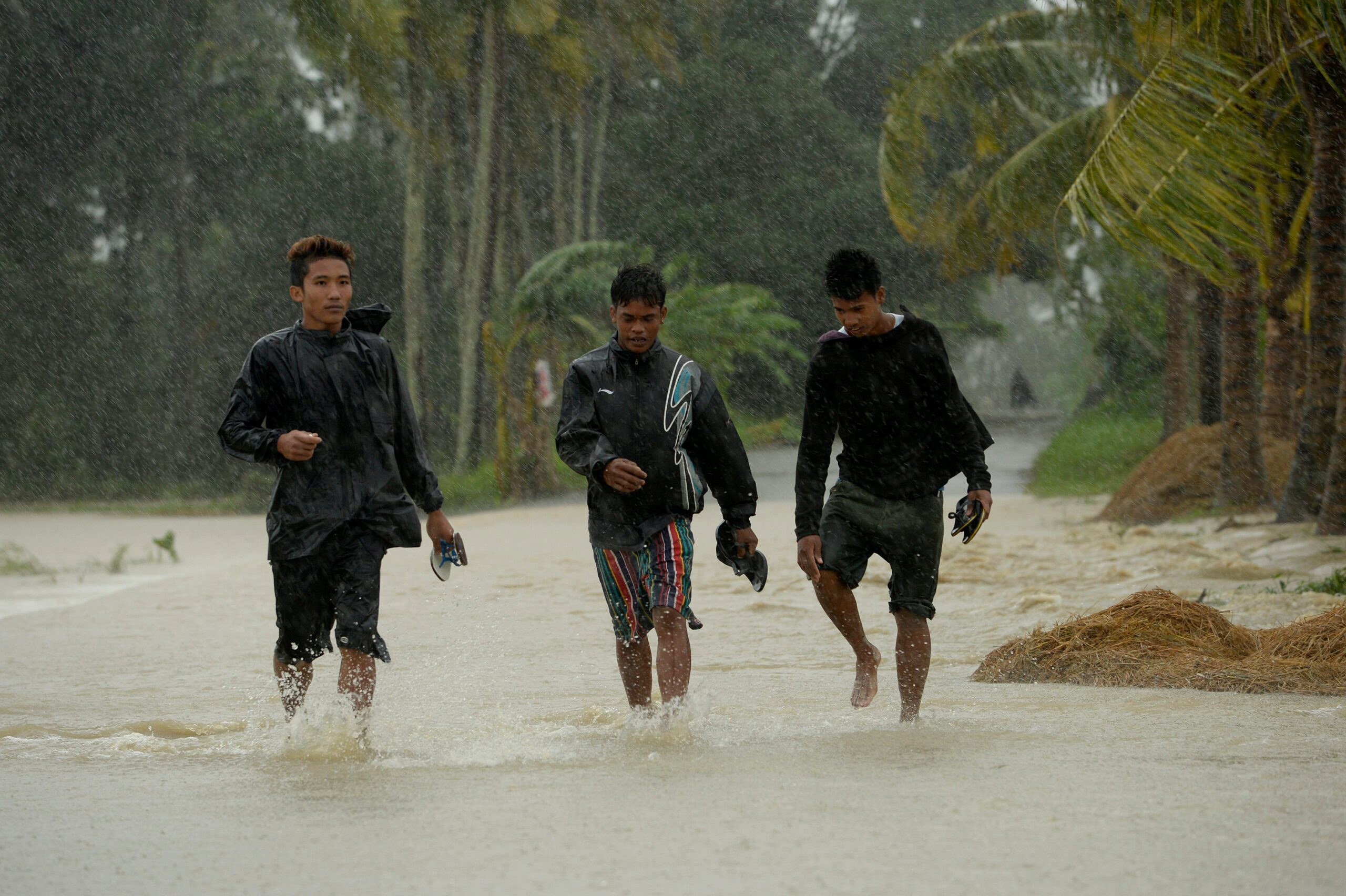SUMMARY
This is AI generated summarization, which may have errors. For context, always refer to the full article.

Twenty-two people were killed in floods, landslides and boat accidents, as well as by flying debris, according to an AFP tally based on confirmed figures from national and local authorities.
Koppu, the second strongest storm to hit the disaster-plagued Southeast Asian archipelago this year, had also forced more than 60,000 people from their homes, authorities said.
After making landfall on Sunday morning on the east coast of Luzon, the Philippines’ biggest island, the slow-moving typhoon brought heavy rain to some of the nation’s most important farming areas.
“I’ve never seen anything like this. It’s the worst flood I’ve seen in my entire life,” farmer Reynaldo Ramos, 68, told Agence France-Presse as he walked through knee-deep water in Santa Rosa, about two hours’ drive north of Manila.
Military, government and volunteer rescue units equipped with rubber boats were trying to help residents in dozens of flooded villages, according to Nigel Lontoc, a regional rescue official.
“The floods are rising fast and some people are now on their rooftops,” Lontoc told AFP, but added there were not enough rescuers and he did not know how many have been saved.
Lontoc said many thousands of people may be stranded in those villages, although it was too early to determine an exact number.
Huddling on high ground
In Santa Rosa, water buffalo, pigs, goats, dogs, washing machines and furniture lined the sides of a storm-tossed highway, where about 200 residents had been seeking refuge from the floods since Sunday night.
Jun Paddayuman, 27, in shorts and a white singlet caked with mud up to his chest, pointed to his nearby house, where flood waters had risen to the roof.
“The waters arrived suddenly. We did not expect it at all,” he told AFP.
When the waters first appeared in his house, Paddayuman said he waded to the highway, helping his eight-months pregnant wife and three-year-old son to safety.
He added he had seen geese, chicken and dogs being carried off by the rampaging waters.
Nearby, two men pushed pigs placed on top of truck tyre inner tubes through chest-deep floods in a valiant attempt to save their hog farm.
Wide expanses of rice paddies had disappeared under torrents of water throughout the towns and villages north of Manila because of runoff from torrential rain unleashed by Koppu on nearby mountain ranges.
Koppu initially hit fishing and farming communities on the east coast of Luzon with winds of 210 kilometers an hour, making it the Philippines’ second most powerful storm of the year.
Fatalities
In the deadliest single incident related to Koppu, 7 passengers aboard a small ferry were killed when it capsized in rough seas off the central island of Guimaras on Sunday.
Although the accident occurred more than 500 kilometers (300 miles) from the direct path of the typhoon, local authorities said the storm exacerbated seasonal monsoon conditions.
Three people were confirmed killed in Aurora province, where the storm made landfall, and 4 in the farming regions just north of Manila.
Most of those fatalities were due to drowning or being struck by fallen trees or other objects.
Flood misery
Heavy rain deepened flood misery in farming and mountainous regions of the northern Philippines on Tuesday, October 20.
Koppu had weakened into a tropical storm and moved into the South China Sea by Tuesday morning, but its huge rain band ensured downpours across swathes of the sodden north where tens of thousands of people were displaced.
“The waters rose really fast, luckily we were rescued,” Lourdes Gatmaitan, 64, told AFP after sleeping at a basketball court being used as an evacuation center in Cabanatuan, a town about three hours’ drive north of Manila, the capital.
Floods as high as rooftops had covered some of the nation’s most important rice and corn farming regions in the flat plains north of Manila that are either side of a giant mountain range.
While the water had subsided on Tuesday in areas closer to the ranges, such as in Cabanatuan, the flooding had moved downstream to other farming towns.
More than 200 villages in the farming regions were flooded on Tuesday, with some areas more than one meter (three feet) under water, according to a report from the local civil defence office.
And heavy rain continued over the Cordillera mountain range, meaning more water was expected to flow down.
Weather forecasters also warned that Koppu would cut back onto the far northern edge of Luzon on Wednesday morning after picking up more water in the South China Sea.
The Philippines endures about 20 major storms a year, many of them deadly.
The islands of the Southeast Asian archipelago are often the first major landmass that the storms hit after emerging over the Pacific Ocean.
Scientists have warned climate change will mean more frequent and intense storms.
The most powerful storm ever recorded on land, Super Typhoon Haiyan, hit the Philippines in 2013, leaving at least 7,350 people dead or missing.
Deeper poverty
While the latest storm has not been one of the deadliest, it will condemn many thousands of already financially struggling farmers to deeper poverty.
On the outskirts of Cabanatuan City, a regional trading center, the receded floodwaters revealed vast swathes of rice crops destroyed, their green blades turned brown, flattened and withered.
Farmers and other residents, their legs and arms caked in mud, wrung mattresses and blankets by the roadside to squeeze out brown water.
“If we don’t clean this up fast, we’ll get sick,” tricycle driver Dennis Punzalan told AFP, his feet buried in thick, slimy mud, as he threw his five-year-old daughter’s teddy bears on to a pile of rubbish. – with reports from Joel Guinto, Agence France-Presse/Rappler.com
Add a comment
How does this make you feel?
There are no comments yet. Add your comment to start the conversation.